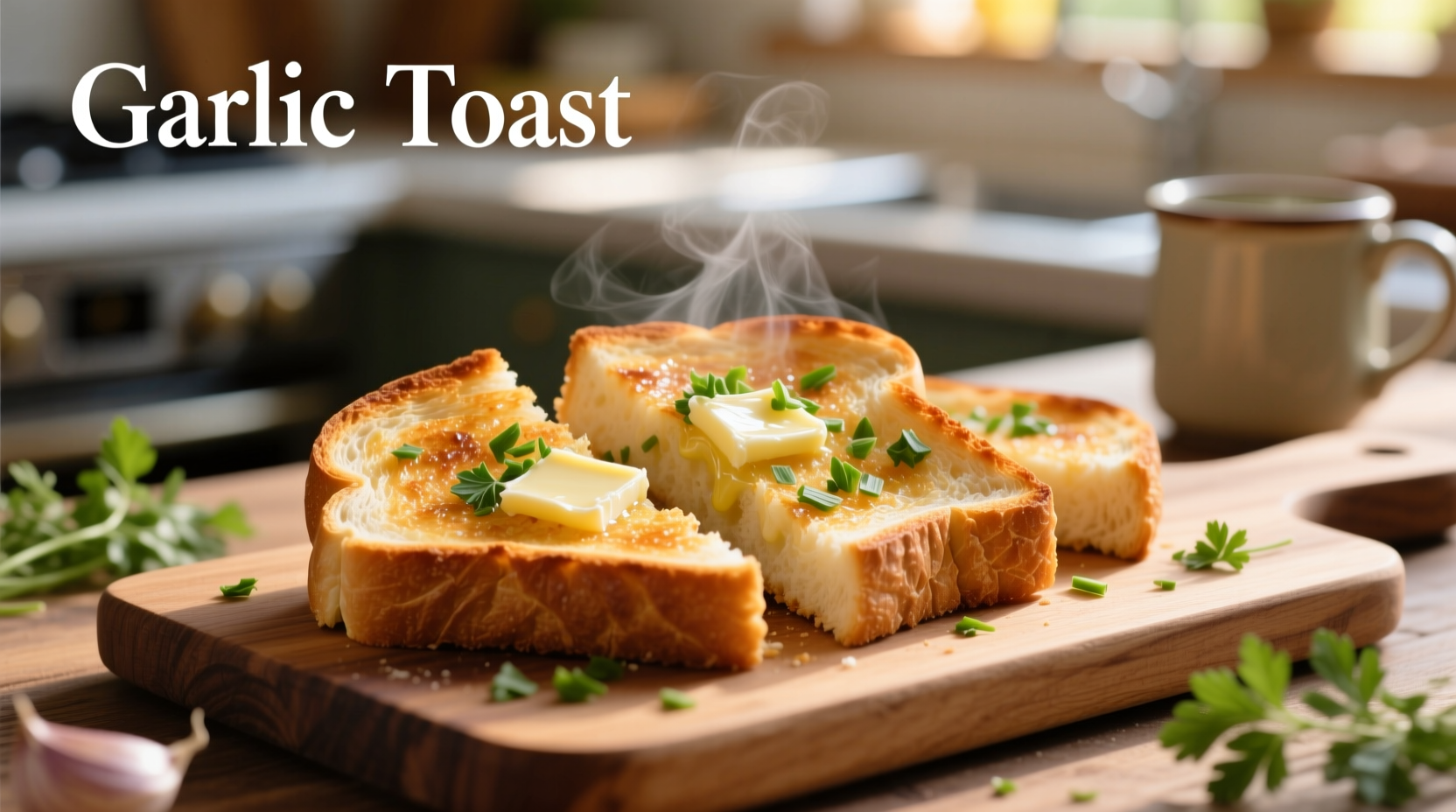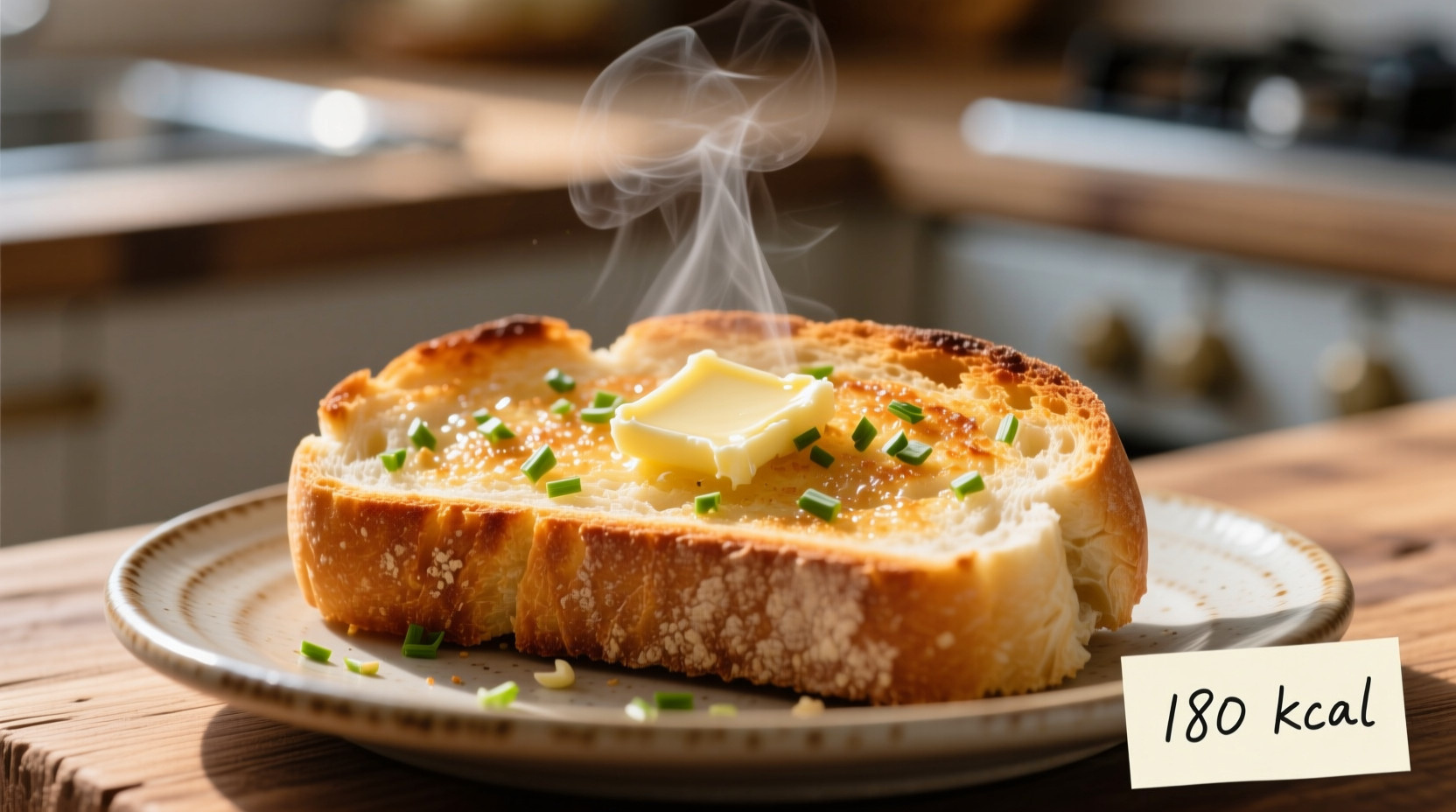Curious about how garlic toast fits into your daily nutrition goals? You're not alone. Thousands search for calories in garlic toast each week as they balance flavor with health considerations. Whether you're tracking macros, managing weight, or simply making informed food choices, understanding the nutritional profile of this popular side dish matters.
What Determines Garlic Toast Calorie Count?
The calorie content of garlic toast isn't fixed—it changes dramatically based on preparation. Let's break down the key factors that impact the calories garlic toast contains:
Bread Selection Matters Most
Your bread choice forms the foundation of garlic toast's nutritional profile. According to USDA FoodData Central, different bread varieties contribute significantly different calorie bases before adding any garlic or fat:
| Bread Type | Calories Per Slice (28g) | Carbohydrates |
|---|---|---|
| White bread | 70-80 | 13-15g |
| Whole wheat | 80-90 | 14-16g |
| Sourdough | 75-85 | 14-15g |
| Baguette slice | 90-110 | 18-22g |
Source: USDA FoodData Central
Fat Content: The Biggest Calorie Variable
The fat used to prepare garlic toast creates the most significant variation in calorie count. Butter and olive oil both add approximately 100 calories per tablespoon, but people often use different amounts:
- Light preparation (1 tsp fat): +33 calories
- Standard restaurant portion (1 tbsp fat): +100 calories
- Generous preparation (2+ tbsp fat): +200+ calories
According to research published in the Journal of the Academy of Nutrition and Dietetics, many restaurant-style garlic bread servings contain 300-400 calories per serving due to liberal butter application.

Healthier Garlic Toast Modifications
You don't need to eliminate this flavorful side dish from your diet. Smart modifications can reduce the garlic bread calories per slice by 30-50% while maintaining great taste:
Smart Swaps That Actually Work
- Use spray olive oil instead of butter (reduces calories to ~25 per slice)
- Choose thinner bread slices (reduces base calories by 20-30%)
- Add garlic to broth and lightly brush (creates flavor with minimal fat)
- Include nutritional yeast for cheesy flavor without extra calories
Nutritional Comparison: Traditional vs. Modified
A side-by-side comparison shows how simple changes impact your calorie intake:
| Preparation Method | Calories Per Slice | Key Nutritional Differences |
|---|---|---|
| Traditional (white bread + butter) | 180-220 | High saturated fat, low fiber |
| Modified (whole wheat + olive oil spray) | 100-130 | Higher fiber, heart-healthy fats |
| Restaurant style (thick cut + generous butter) | 250-350 | Very high saturated fat, often contains hidden sugars |
Putting Garlic Toast in Context
How does garlic toast fit into a balanced diet? For adults following a standard 2,000-calorie diet:
- A single slice represents 7.5-10% of daily calories in traditional preparation
- The modified version accounts for just 5-6.5% of daily needs
- Most dietary guidelines recommend keeping added fats to 20-35% of total calories
According to the 2020-2025 Dietary Guidelines for Americans, choosing whole grains and healthy fats makes garlic toast a more nutritionally valuable addition to meals.
Maximizing Flavor While Minimizing Calories
As a culinary professional, I've found these techniques deliver maximum garlic flavor with minimal added calories:
- Dry toast first - Toast bread lightly before adding flavorings to reduce needed fat
- Use garlic-infused oil - Provides intense flavor with less oil needed
- Add acid - A splash of lemon juice after baking enhances perceived richness
- Incorporate herbs - Parsley, oregano, or basil add volume without calories
These methods address the common frustration that low-calorie versions lack authentic flavor—a sentiment reflected in consumer reviews across cooking platforms.
When Garlic Toast Fits Your Goals
Garlic toast can be part of various dietary approaches when prepared thoughtfully:
- Weight management: Stick to one slice of modified version (100-130 calories)
- Active lifestyles: Traditional preparation provides quick energy before workouts
- Post-workout: Pair with protein for balanced recovery nutrition
Registered dietitians often recommend viewing garlic toast as a complement to meals rather than a standalone item—pairing it with protein and vegetables creates a more balanced plate that keeps you satisfied longer.











 浙公网安备
33010002000092号
浙公网安备
33010002000092号 浙B2-20120091-4
浙B2-20120091-4